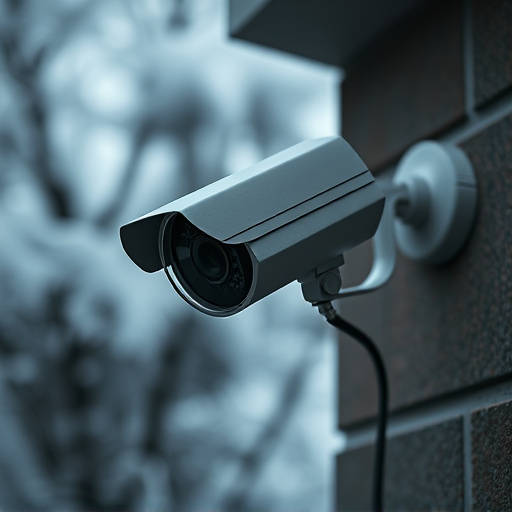Effective fake security camera placement involves strategic angles and comprehensive coverage, ensuring broader area surveillance with clear images. Assess your environment, consider factors like layout, obstacles, lighting, entry points, and field of view to optimize placement. Mount cameras at eye-level or slightly elevated for optimal deterrent effect, addressing blind spots with subtle upward angles. Position them in strategic locations with clear lines of sight, such as entryways, open spaces, or intersections, while using natural obstacles or ceiling/wall mounts for discretion. Regular testing is crucial for convincing setups that discourage intruders without real equipment costs.
“Enhance your home or business security with our comprehensive guide on fake security camera installation. Learn how strategic placement, from understanding environmental factors to choosing optimal angles, can deter potential criminals effectively. Discover best practices for securing and hiding these devices while boosting realism. Avoid common pitfalls and master the art of false surveillance, ensuring peace of mind in today’s digital era. Key focus: fake security camera placement angles.”
- Understanding Fake Security Camera Placement for Effective Deterrence
- Evaluating Your Environment: Factors to Consider Before Installing
- Determining Optimal Angles for Maximum Coverage and Discretion
- Best Practices for Securing and Hiding Your Fake Cameras
- Advanced Tips: Enhancing Realism and Avoiding Common Pitfalls
Understanding Fake Security Camera Placement for Effective Deterrence
When installing fake security cameras, understanding their placement angles is key to achieving effective deterrence. Positioning them strategically can significantly enhance the perceived level of surveillance, dissuading potential intruders from attempting unauthorized access. Cameras should be mounted at eye-level or slightly elevated, as this angle covers a broader area and captures clear images, making it harder for criminals to spot vulnerabilities in your security setup.
Consider the entry points into your property when deciding on camera placement. Front doors, windows, garages, and any other potential access points should all be within the field of view. Overlapping fields of vision between multiple cameras can further strengthen security as it creates a more comprehensive surveillance network. Remember, the goal is to create an environment where potential intruders feel they are constantly under observation, thereby deterring criminal activity.
Evaluating Your Environment: Factors to Consider Before Installing
Before installing a fake security camera, it’s crucial to evaluate your environment and consider several factors for optimal placement. Think about the layout of the area you want to secure, including obstacles like trees, buildings, or other structures that might obstruct the view of the camera. Lighting conditions are also key; ensure there’s adequate illumination where the camera will be placed to capture clear images day and night.
Additionally, consider the potential entry points for intruders, such as doors, windows, or common access points. Aim for strategic placement angles that cover these areas effectively. Keep in mind the camera’s field of view (FOV) and ensure it can capture a broad enough area without overlapping too much, which could lead to blind spots. By carefully assessing these aspects, you’ll be better equipped to select the perfect location for your fake security camera, enhancing its deterrent effect.
Determining Optimal Angles for Maximum Coverage and Discretion
When installing fake security cameras, understanding optimal placement angles is key for both maximum coverage and discretion. Positioning them at strategic points allows for a broader view of an area while maintaining an invisible presence. Typically, mounting them at a slight upward angle ensures a clear line of sight, capturing potential threats without appearing obtrusive. This angle also helps in covering blind spots often missed by traditional cameras.
For complete coverage, consider placing fake cameras at intersections and along perimeters, mimicking the layout of real security systems. Discretionary placement involves hiding them behind natural obstacles or within existing structures like trees, overhangs, or corners. By blending in seamlessly, these cameras deter potential criminals without alerting them to their presence, making your property safer while maintaining an aesthetically pleasing environment.
Best Practices for Securing and Hiding Your Fake Cameras
When installing fake security cameras, proper placement and angle are key to enhancing security while maintaining a realistic appearance. Positioning them at strategic points can deter potential intruders. Consider placing them in areas with clear lines of sight, such as entryways, windows, or open spaces. The fake camera’s lens should face outward, simulating an actual camera’s field of view.
Hiding the cameras subtly is essential for their effectiveness. Mount them on ceilings or walls, ensuring they are not easily noticeable. Use realistic-looking brackets and covers to blend in with your surroundings. Additionally, consider the lighting; proper illumination helps the camera capture clear footage while also making it less conspicuous.
Advanced Tips: Enhancing Realism and Avoiding Common Pitfalls
To enhance the realism of your fake security camera setup, consider strategic placement angles. Positioning cameras at different heights and directions can make your installation look more authentic. Avoid common pitfalls by not placing them in obvious locations; blend them naturally into the environment. For instance, mount lower-angle cameras near entry points or parking areas, while higher-mounted cameras can keep an eye on rooftops or upper floors. Remember to vary the camera views and distances to mimic actual surveillance patterns.
Additionally, ensure that your fake cameras have well-lit, clear views. Position them where they’re not obstructed by trees, signs, or other structures during peak hours. Regularly test their functionality and battery life to keep them operational. By following these advanced tips, you can create a convincing security system that deters potential intruders without breaking the bank.
In conclusion, mastering the art of fake security camera installation involves a strategic blend of placement, discretion, and realism. By understanding your environment, selecting optimal angles for maximum coverage, and adhering to best practices for securing and hiding these devices, you can create an effective deterrent while maintaining an aesthetically pleasing space. With advanced tips tailored to enhancing realism and avoiding common pitfalls, you’ll be well-equipped to install fake security cameras that serve both as a robust security measure and an inconspicuous addition to your surroundings.
